How the icebreaker Krasin fought
The Great Victory is not only impressive strategic operations and brilliant parades, it is also the hard everyday work of millions of people. One of the unidentified war workers who forged the Victory was the icebreaker Krasin, whose team selflessly participated in escorting the northern convoys during the wartime.
On the eternal parking
At the embankment of Lieutenant Schmidt in St. Petersburg, the Krasin icebreaker is moored at the eternal parking lot. Since 2004, it is the flagship flotilla historical ships of the Kaliningrad Museum of the World Ocean. Launched in England nearly a century ago, he survived all the "storms and storms" of the XX century - the First World War, the Civil War and the Second World War, participated in numerous Arctic expeditions, the most famous of which was the rescue of Italian balloonists led by General W. Nobile. in 1928, the difficult 1990s, when the famous icebreaker-monument miraculously escaped being sold abroad. Now the "younger brother" of the legendary "Ermak" (the world's first sea icebreaker) is rightfully considered one of the most unusual and popular St. Petersburg museums.
"Krasin" - one of the few remaining ships - participants in Arctic convoys. Despite the fact that after the overhaul and modernization carried out in 1956 - 1960, its appearance and internal layout have changed dramatically, the memory of military events is carefully preserved on board the museum icebreaker.
Mikhail Gavrilovich Markov (1904-1954). The captain of the icebreaker "Krasin" in 1942-1945. Photo: Motherland
"Krasin" goes to the front
The beginning of the war caught the "Krasin" in the Far East, where he moved from the Baltic in 1934, participating in an expedition to rescue Chelyuskinites. During this period the "Krasin" was among the five most powerful Russian icebreaker. Since 1940 of them commanded by an experienced captain Mikhail Markov Gavrilovic.
The mobilization and armament of icebreakers was envisaged in the plans of the fleet command since the 1930x. A mobilization project (212 index) was developed for Krasin. On the icebreaker were to install three 130-mm guns, four 76,2-mm Lender guns and two paired 12,7-mm DShK machine guns on the wings of the upper bridge 1. But with the beginning of the war it became clear that the project will not be realized, and the icebreaker was originally prepared a very special role ...
Until October 1941, the "Krasin" continued to engage in escorting ships in the ice. Difficult situation at the front forced to make a decision on the return of an icebreaker in the western sector of the Arctic over the Atlantic. Planned repair and armament "Krasin" was supposed to hold in the United States. At the same time, the ship was planned to be leased to the Americans for 12 months with the aim of possible using the Soviet icebreaker for landing in Greenland, where German reconnaissance and meteorological stations were located.
"Krasin" in a US port. In the stern, the 76,2-mm gun installed is clearly visible. 1942 g. Photo: Homeland
In the USA and the UK
4 November 1941 The Krasin came out of Emma Bay in Chukotka and 14, after several storms, came to Seattle, where it was exactly one month old. During this time, he was examined by American engineers. The decision to lease was canceled. 2 December Captain MG Markov was instructed by acting Soviet ambassador in Washington, AA Gromyko follow New York or Boston via the Panama Canal. Immediately prior to departure the captain was invited to the British consul, who handed him the secret package indicating the route.
2 January 1942 city "Krasin" passed the Panama Canal. The next day, on the basis of new orders, the icebreaker changed its route and headed for Baltimore, where 12 arrived in January. There, the Krasin was undergoing maintenance, as well as weapons (one 76,2-mm gun, six 12,7-mm machine guns and four 7,62-mm machine guns). As a cargo, on account of the allied deliveries, they took on board three new guns, 16 machine guns, 2 thousands of shells and 220 thousands of rounds.
Mounting arms ended February 4. Four days later, the anti-magnetic protection device was tested, and the next day the Krasin arrived in Norfolk, where ammunition was loaded on board. 10 February icebreaker left Norfolk and went in the direction of New York. In Delaware Bay was accompanied by an American submarine and airship. February 14 "Krasin" came to Boston, where the next day went to Halifax, where 27 February arrived.
March 3 from 21 convoy vessel (8 March he was joined by another), he went in the direction of the UK. 15 March A convoy in the Scottish Isles area was divided into two groups, one of which (as part of 7 ships) headed for Glasgow, where 17 arrived in March.
In Glasgow, two more 76,2-mm (12-pounder) guns were added to the armament. They also made foundations and towers for the new guns and sockets for the 20-mm Oerlikon submachine guns. They temporarily installed five heavy machine guns "Browning" and two machine-guns, "Hotchkiss".
One of the first pictures of the future "Krasin". Tug "Vigilante" displays on the tests built for Russian icebreaker "Svyatogor", March 31 1917, the
"How we were delighted to see" Krasin "in Murmansk!"
The Krasin went to Murmansk as part of the PQ-15 convoy, which left Reykjavik on April 26, 1942 as part of 23 transports and two icebreakers (Krasin and Montcalm). On May 2, near the meridian of 18 east longitude, the convoy was attacked by enemy torpedo bombers. The attacks killed three vehicles. The successful operation of the torpedo bombers is to some extent due to the unexpectedness of the first strike on the convoy aviation. The next day, ships were attacked by five aircraft, of which three were shot down by escort ships and transports. The fire was difficult to conduct due to the fact that the German pilots launched an attack only at a height of 50 m. The Polish submarine Hawk, which had lagged behind the convoy, was mistaken for the enemy and attacked by a minesweeper and destroyer escort, and then flooded by the crew.
In his report, the captain of the icebreaker gave the following description of the events that took place on 3 in May: “In addition to continuously running two German scouts, 1.35 appeared on the right horizon five heavy planes low over the horizon. The planes entered the head of the convoy and, attacking 45, launched an attack. The head destroyers started firing, the convoy opened fire with delay, and the ships had to shoot through as the torpedo bombers went at a very low altitude (around 50 m).
In the 1.38 torpedoed three steamers - all head, including the flagship and in front of us going. At the same time he broke out in the air torpedo and fell into the water next to it torpedoed steamer Cape Korso. A few seconds later, the steamer Cape Korso, from which the shooting continued at the plane that had been burning on the water, exploded and, standing upright with its nose up, plunged into the sea. The icebreaker Krasin, following the steamer Jutland, which, being torpedoed, blocked our path, deviated to the right, in the direction of the newly exploded steamer Cape Korso and, passing between them, followed further ...
According to our data, three of the five torpedo bombers were shot down ... The flagship of Batavon, which received slight damage and continued to float with a slight trim (tilting the ship in the longitudinal plane) on the nose, after removing the crew from it, was carried out by the minesweepers of our escort.
The caravan, having leveled it out, follows on. Icebreaker "Krasin" is the head of the fourth column. German reconnaissance planes periodically appear on the horizon, adjusting our progress. Snow charges. The composition of the caravan - 22 steamer. Escort staff - 14 units.
4 May in 1.00 again attack the enemy. Due to poor visibility it was impossible to determine the number of enemy aircraft. All escort ships from the convoy were fired not on visible aircraft, but in the directions from which the sound of engines came. This was the last and unsuccessful attack of the enemy "3.
Two days before the arrival of the convoy to Murmansk court found at the edge of the ice German submarine. Head destroyer escort opened fire on it, and closes the marching order trawlers dropped depth charges.
6 May 20 transports and two icebreaker arrived in Murmansk. For "Krasin" ended the most difficult trip across two oceans lasting 15 309 miles. The escorted cruiser Niger left the convoy for another 2 in May.
“If anyone knew how happy we were to see Krasin in Murmansk! We were glad that the icebreaker had returned to his homeland, were proud that his crew did not lose their presence of mind during the most difficult and important hours,” wrote I.D. Papanin
19 June "Krasin" as part of the convoy, which also included the icebreaker "Montkalm", the destroyer "Kuibyshev" and four British minesweepers, went to Arkhangelsk. 21 June "Krasin" came to Severodvinsk, where it was supposed to undergo its refit. In the future, "Krasin" was once again rearmed. On 15 February 1943, the Krasin’s artillery armament was as follows: six American 76,2-mm guns; seven X-NUMX-mm Oerlikon automatic cannons; six 20 mm Browning machine guns; six 12,5-mm machine guns "Colt" 7,32. Until the autumn of 4, the "Krasin" worked in the North. His main task was to navigate in the ice of the internal convoys, on whose ships various cargoes and personnel of the Glavsevmorput Polar Stations were delivered, which did not cease their hard work during the war years.
Twice Hero of the Soviet Union, Rear Admiral Ivan D. Papanin (1894-1986). Head of the Northern Sea Route Headquarters in 1939-1946
Against "Admiral Scheer"
In August, the 1942 "Krasin" and the ships accompanied by him almost became victims of the German "pocket battleship" (the type of ships that allowed Germany to use them to bypass the restrictions of the Versailles-Washington system) "Admiral Scheer". During this period, after the defeat of the PQ-17 convoy, the movement of the Allied convoys temporarily ceased. This break was used by the command of Kriegsmarine to carry out the operation under the code name "Wunderland" ("Wonderland"), the essence of which was to attack the Soviet maritime communications in the Kara Sea with large surface ships and submarines. An important role in it was assigned to "Admiral Scheer", whose commander was instructed, acting on the routes of vessels between Novaya Zemlya and Vilkitsky Strait, to attack convoys and destroy the constructions of the polar ports. As a result, the main "achievements" of the raider was the sinking of the lightly-armed icebreaking steamer "Alexander Sibiryakov" 25 in August 1942 and the shelling of the port of Dickson two days later. After that operation was terminated.
19 in August "Krasin" brought with Dixon east caravan of 8 transports. The order was given by the Chief of the Central Sea Route I.D. Papanin precisely because of the fear of the port attack by Admiral Sher. 20 August on the Soviet ships, who were at that moment north of the island of Kravkov, saw a reconnaissance aircraft from a German ship. The pilot could not see them because of the thick fog. The next day, the fog again saved them already in the area of Belukha Island. The plane appeared several more times, but because of the weather conditions, the "Krasinsky" convoy could not detect the convoy, and on August 25 suffered a serious accident and stopped flying.
Avral on the icebreaker "Krasin" in the East Siberian Sea. Photo: RIA News
On ice postings
Another dangerous and difficult task for the Krasin and other icebreakers was the withdrawal of 42 vessels from the Kara Sea to White (including 9 transports that were supposed to go to the Far East, but could not do this because of the difficult ice situation). In addition to the Arctic ice, the enemy’s active operations, poor communication performance and lack of coordination between the leadership of the Northern Sea Route and the command of the White Sea military flotilla2 complicated the situation. On October 6 31 1942 of city of Port Dickson it sent eight convoys. "By the exit of the last convoy, the entire northern part of the Kara Sea was covered with young ice, the thickness of which in the area of Dixon Island - Bely Island reached 20-25 centimeters. Due to the appearance of heavy ice to the west of Yugorsky Shar Avenue, part of the transports and icebreakers had to remove from back east of the Strait into the Kara sea, and carry them to the west across a broader prospect. Kara Gate "5. Even before 30 ships and ships, icebreakers pulled out of the Kara Sea to Kolguev Island from 4 November to 3 December 1942. From Kolguyev, their path lay in the Dvina Gulf. December 6 "Krasin" together with the famous ice-cutter "F. Litke" (during the war - TFR-18) brought the last convoy6 to Dvina Bay. The operation was not without a loss (in particular, the Shchors steamer hit the mine and sank, the Mikoyan icebreaker was damaged by the explosion), but the task of saving the ships was solved. And the Krasin played a huge role in this.
21 October 1943. Krasin, like a number of other icebreakers, was transferred to the Pacific Fleet. Arriving in Vladivostok, he completed his round-the-world voyage, which lasted 885 days. 16 transition participants were marked with combat awards. I.D. After the war, Papanin wrote in his memoirs: "The Krasin Transition added a new bright chapter to the biography of this famous icebreaker."
In navigation 1943-1944. (winter - spring) "Krasin" together with the icebreaker "Mikoyan" worked in the Laperuz Strait to escort ships to Sovetskaya Gavan, Nagaevo and Vanina coves. In total, they carried 367 transport ships. In 1944, the "Krasin" worked in the Sea of Okhotsk, participating in the rescue of the steamers "Belarus", "Manych" and "Msta".
The Northern Sea Route played a colossal role during the Great Patriotic War, becoming the most important transportation artery of the USSR. The hard work for many years naturally affected the state of the icebreaker. Repairs were carried out twice - at Dalzavod in Vladivostok, and then in the United States. In September, the 1945 town of Krasin was disarmed in Vladivostok. For an icebreaker that had been in service for almost 30 years (which is a long time), as well as for the whole country, a peaceful life began.
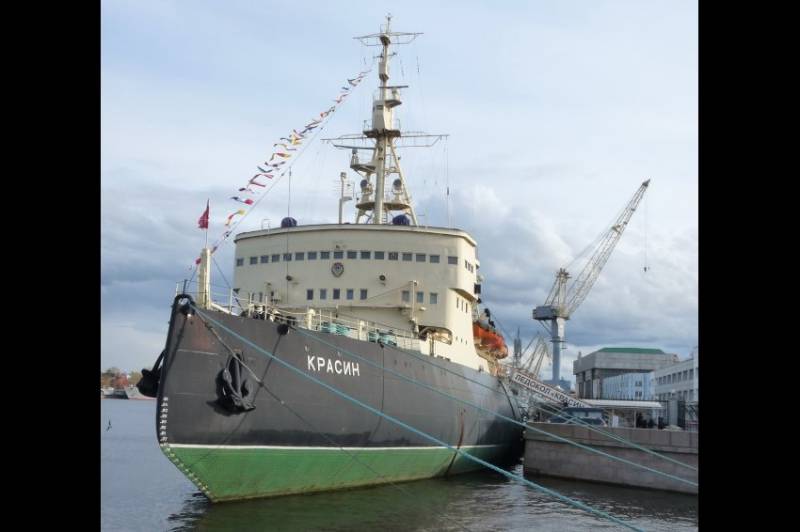
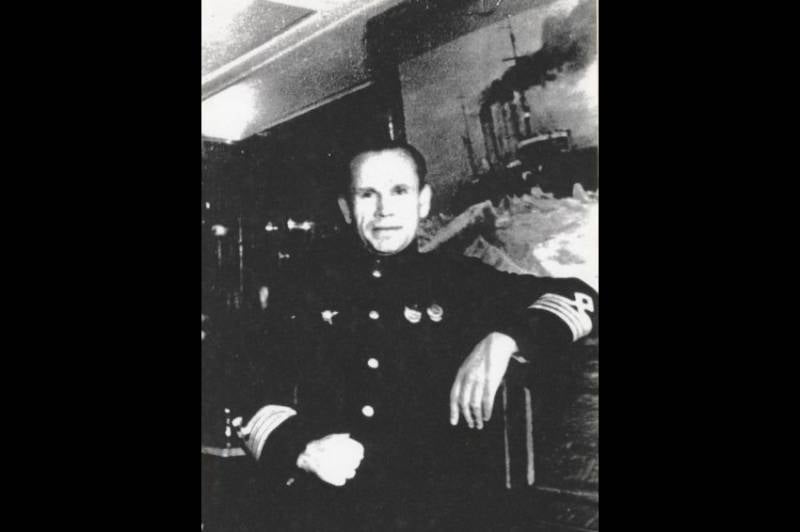
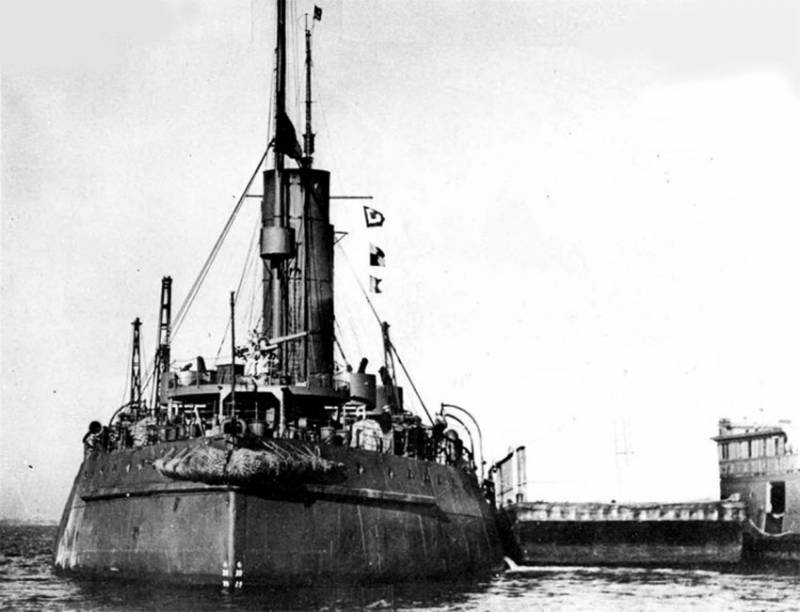
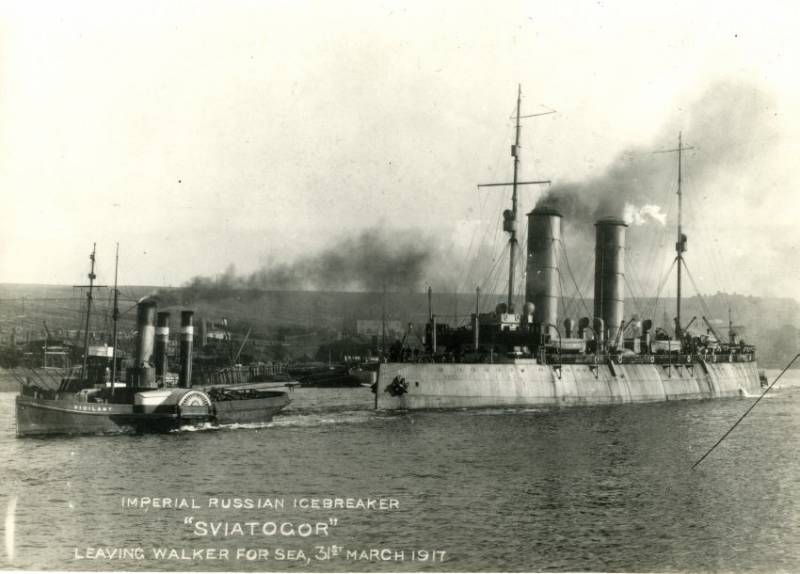
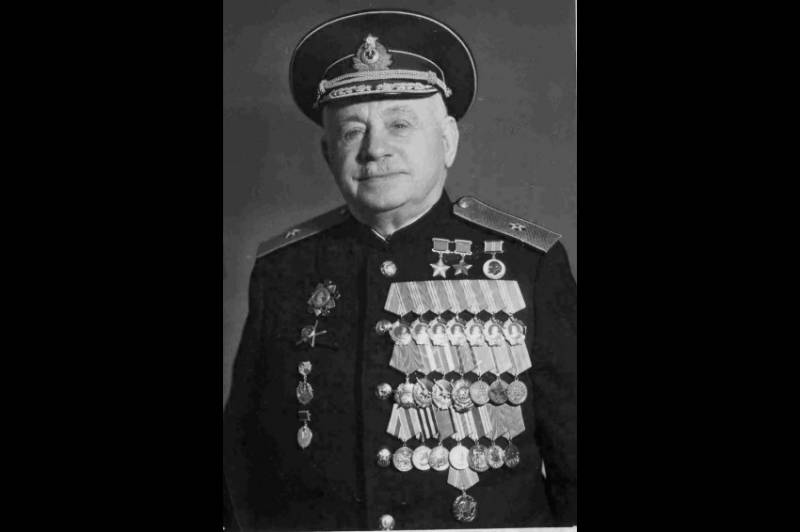
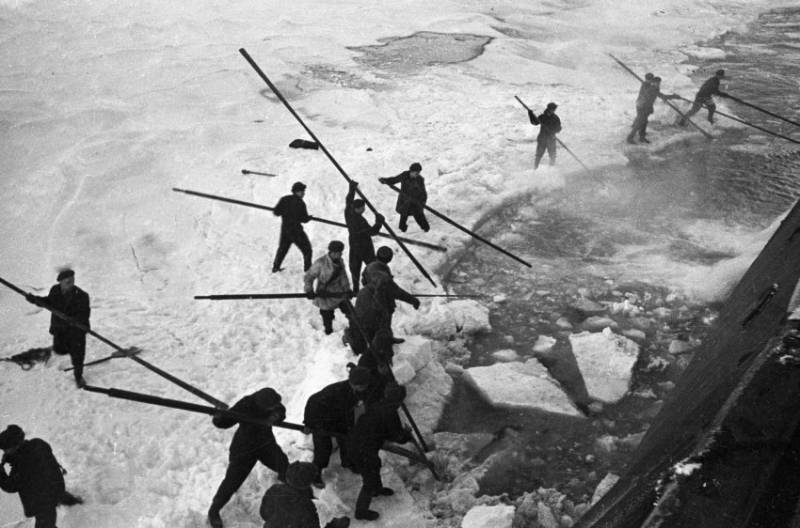
Information